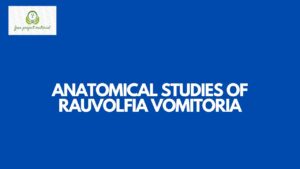ABSTRACT
This study was aim at examining the microbial contamination of beauty salon equipment from Ikot Ekpene metropolis. Standard aseptical methods were employed in carrying out the analysis. The result of the study revealed the following; heterotrophic bacterial count of the samples revealed that sample D (Brushes) of 4.0 x 104 cfu/g had the highest bacterial count, while sample C (mascara) (2.6 x104 cfu/g) had the least colony count. The percentage frequency of occurrence of the bacterial isolates revealed that Corynebacterium sp, Staphylococcus sp had the highest percentage frequency of occurrence (25%) while Pseudomonas had the least (5%). morphological and biochemical characterization of the bacterial isolates revealed the presence of Enterococcus sp, Corynebacterium sp, Staphylococcus sp, Pseudomonas sp, Micrococcus sp and Klebsiella sp. The heterotrophic fungal count of the samples revealed that sample B (powder) had the highest fungal count (0.9 x 104 cfu/g) while sample C (mascara) had no fungal growth. Percentage occurrence of these fungal isolated revealed that Aspergillus sp had the highest percentage occurrence (60%) while Candida had 40%. High rate of bacterial and/or fungal contamination of used instrument in beauty salons is an indication of poor hygienic practices on the part of the service providers. Hence, proper infrastructures should be implemented to ensure the disinfection and/or sterilization of such instruments before and after use.
TABLE OF CONTENTS
Title Page – – – – – – – – – i
Declaration – – – – – – – – – ii
Certification – – – – – – – – – iii
Declaration – – – – – – – – – iv
Acknowledgement – – – – – – – – v
Abstract – – – – – – – – – vi
Table of Contents – – – – – – – – vii
CHAPTER ONE: INTRODUCTION
1.1 Background of the Study – – – – – – 1
1.2 Aim and Objectives of the Study – – – – 5
1.3 Scope and Limitations of the Study – – – – 5
1.4 Definition of Terms – – – – – – 6
CHAPTER TWO: LITERATURE REVIEW
2.1 Salon Hygiene – – – – – – – 7
2.2 Risk of Microbial Contamination of Beauty
Salon Equipment – – – – – – – 9
2.3 Microorganisms Isolated from Salon Tools – – – 11
2.4 Hygiene Standards – – – – – – – 14
2.4.1 Hand Hygiene – – – – – – – 14
2.4.2 Cuts and Abrasions – – – – – – 15
2.4.3 Wounds and Infections on Client – – – – 16
2.5 Cleaning and Disinfecting Instrument – – – – 17
2.7 Types of Beauty Salon Equipment – – – – 19
CHAPTER THREE
MATERIALS AND METHODS
3.1 Materials – – – – – – – – 26
3.2 Method – – – – – – – – 26
3.2.1 Sample Collection – – – – – – – 26
3.2.2 Sterilization of Materials and Media – – – – 27
3.3 Inoculation of Sample – – – – – – 27
3.4 Enumeration of Total Bacterial Count – – – – 27
3.5 Purification of Bacterial Colonies – – – – 28
3.6 Characterization and Identification of Bacterial Isolates – 29
CHAPTER FOUR
RESULTS AND DISCUSSION
4.1 Results – – – – – – – – 30
4.2 Discussion – – – – – – – – 38
CHAPTER FIVE
CONCLUSION AND RECOMMENDATIONS
5.1 Conclusion – – – – – – – – 44
5.2 Recommendations – – – – – – – 44
References
CHAPTER ONE
1.0 INTRODUCTION
1.1 Background of the Study
The concept of a salon is linked to beauty, an establishment dealing with cosmetic products and tools to improve the appearance of one’s hair, face, and body. Cosmetics are generally mixtures of chemical compounds derived from natural (such as coconut oil) or synthetic sources. In the United States, the Food and Drug Administration (FDA), which regulates the cosmetics industry, defines cosmetics as Intended to be applied to the human body for cleansing, beautifying, promoting attractiveness, or altering the appearance without affecting the body’s structure or functions (Sources of Cosmetic Products & Ingredients) (Dr. Oliver and Professor Ben, 2019).
Salons provide a wide range of services including hairdressing, nail care (manicures and pedicures), hair removal by waxing and threading, mud baths, and many other services. However, they are also considered a major health concern (US Food and Cosmetic, 2021). The health risks associated with beauty salons vary depending on the products and tools used, the nature of the business, and the service providers themselves.4 Salons can contribute to and cause the spread of viral, fungal, and bacterial infections (Stout et al., 2011) Among the diseases that can be transmitted in beauty salons are hepatitis B and C, herpes, AIDS, skin and eye infections, hair lice, and chronic fungal diseases (Alswedi and Jaber 2019).
The ingredients in cosmetic products and the materials used in the tools make the salon an ideal environment for the proliferation of microbes, thus contributing to the spread of various diseases (Stanley et al., 2015). Cosmetics fulfill all of the requirements for microbial growth (Pinon et al., 2007). The ingredients of most beauty products include sugar, starch, protein, amino acids, organic acids, acids, alkalis, salts, paraffin, fatty acids, alcohols, esters, moisturizers, colors and dyes, preservatives, antioxidants fragrances, and essential oils. In addition, most of these ingredients are water soluble, which is an essential factor for the growth of microorganisms (Pinon et al., 2007). Cosmetics that contain high-water content are at a higher risk of contamination, which can lead to an alteration in the composition of the product and/or constitute a threat to the health of the consumer (Sources of the chemistry of cosmetics; Australian Academy of Science) (Behravan et al., 2005). Hairdressing salons are classified as personal services establishments and such services may pose potential health concerns to their clients including the risk of infection and sometimes injury (Adeleye and Osidipo, 2004; Barn and Chen, 2011). These health risks vary depending on the nature of the service, the tools and equipment that are used, the health status of the clients and service providers as well as the infection control procedures, such as piercing and tattooing are clearly associated with bacterial, viral and fungal infections risks, even non-invasive procedures such as pedicures can result in infection (Stout et al., 2011). It is believed that any service with the potential to break the skin’s surface can be associated with infections and infections can then be transmitted to and between clients if proper infection control procedures are not implemented. It has observed that hairdressing operators and their clients are constantly being exposed to bacterial or fungal contamination during their services.
Microorganisms are everywhere including skin surfaces and are continually introduced into the environment and could therefore easily spread between clients and operators and transferred by contact with unwashed hands, soiled equipment or contact with blood and other body substances (De Souza and Shibu , 2004).
Infection can occur during hair dressing procedures since items such as razors, scissors, combs, clippers and hairpins can accidentally penetrate the skin. Blood and body fluids do not have to be visible on instruments, equipment or working surfaces for infection to be transmitted.
Infections that can be spread I hairdressing premises include skin infections on the scalp, face and neck such as impetigo and fungal infections such as tinea capitits and ringworm (Brown, 2006: Amodio et al., 2010; Barn and Chen, 2011). Burns can also occur during hair dressing procedures involving hot rollers, tongs and crimpers and when hair is being washed with contaminated water or when stationary or hand held dryers are improperly used. There are reports of people who have been infected with head lice from direct hair To hair contact with someone who has head lice (Ruddy et al., 2011). Unfortunately, there are no established regulations, guidelines and best practices for many of these salons in our environment. Our goal is to protect the health of the public and one important aspect of minimizing health risks is to understand the infection risks of these salons, hence the aim to evaluate microbial contaminations on tools and equipment used in hair dressing salons in selected salons in Ikot Ekpene.
1.2 Aim and Objectives of the Study
Due to recurrent cases of infection as to result of beauty salons equipment, this work is aimed at isolating and identified pathogen bacteria associated with hair beauty salon equipment.
The Objectives of the work are:
- To isolate and identify bacteria associated with hair salon equipment’s.
- To determine the bacterial load of some hair salon equipment’s.
- To determine the bacterial load of some hair salon equipment’s.
- To make useful recommendation based on the results of this work.
1.3 Scope and Limitations of the Study
This research work only covers the isolation and identifications of bacteria present in beauty salon equipment. Due to financial constraint, time constraint and poor power supply this research work was limited to the isolation and identification of pathogenic bacteria associated with hair salon equipment.
1.4 Definition of Terms
Cosmetics: Cosmetics is a preparation applied to the body, especially the face to improve its appearance
Hair Lice: Hair lice are tiny crawling insects that live in the hair on a person’s head.
Tinea Capititis: Tinea Capitis also known as ringworm or herpes tonsuran infection is a fungal of the scalp hair.
Infection: Infection is a disease caused by microorganisms that invade tissue.


